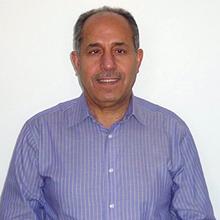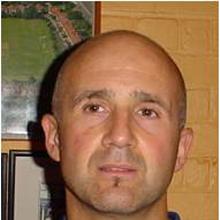Improving scaffold design for biomedical stents used in treating coronary artery disease

Key details of this case study:
Summary: Our research into improved scaffold design for biomedical stents used to treat coronary artery disease is set to improve patient outcomes.
Status: Ongoing
Key staff: Professor Neil Bressloff and Professor Nick Curzen

Our relationships with the Universities of Bradford and Southampton have been crucial.
Explore this case study:
The challenge
Over 95,000 patients in England and Wales undergo stenting every year – a procedure where a tiny metal or plastic tube is inserted into a blocked artery to keep it open and restore blood flow.
A BVS is a stent that is used in the same way as a standard metallic stent and serves the same purpose of holding open a previously constricted artery. However, a BVS is bioresorbed into the vascular tissue once the vessel has healed; effectively disappearing and avoiding the issues associated with permanent metallic stents.
Recently, some stents have resulted in inferior outcomes due to late stent thrombosis and this has led the US Food and Drug Administration to recall some devices. Similar recommendations followed in Europe. At the centre of this issue is the thickness of the scaffold struts, something that is known to be highly related to poor outcomes.
What we did
The University's Professor Bressloff had already successfully demonstrated the effectiveness of applying theory of probability methods to stent design.
In further research, funded by Arterius Ltd, Professor Bressloff focussed on the multi-disciplinary, multi-objective design optimisation of coronary stents using full three-dimensional structural and fluid mechanics modelling. The key design features which were found to improve the stents’ performance included a graduated cell design with a reinforced closed-cell central region; the shapes of the scaffold crowns; biologically inspired open-cell helical strut configuration; and variable strut width.
These features have made it possible to produce scaffolds with high radial strength and low recoil. Professor Bressloff has been able to reduce strut thickness to 95µm, producing less disruption of the arterial blood flow, compared with the current market-leading BVS.
This research was funded by Arterius Ltd and Innovate UK.
Our impact
Our new stent design has been granted a patent, for which Arterius Ltd (ArterioSorb®) owns the exploitation rights of the invention.
Arterius Ltd has combined our design with its own polymer science and manufacturing expertise to manufacture numerous scaffolds for bench testing and pre-clinical trials led by one of the most highly esteemed interventional cardiologists in the world, Professor Patrick Serruys.
Very promising results from trials have led to what is hoped to be a final pre-clinical trial prior to human trials later in 2018.
The facilities we used
We used the following University of Southampton facilities: High performance computers, including IRIDIS
Find out more about the Engineering and Environment Faculty's many world class facilities.
Partners we worked with
This research was an interdisciplinary collaboration between Engineering and Medicine within the University of Southampton.
The research was an academic collaboration between the Universities of Bradford and Sheffield. We also worked closely with an external partner in the form of Arterius UK
Related Staff Member
Related Staff Member
The following PhD researchers also played an integral part in this research:
- Dr Giorgios Ragkousis
- Dr Sanjay Pant
Links to external websites
The University cannot accept responsibility for external websites.
Other University of Southampton sites
You might also be interested in
Computational Engineering Research Group
Discover more about our related research group, Computational Engineering and Design. We are a centre of excellence for multidisciplinary engineering simulation and design.
Other healthcare and medicine case studies
Learn more about the research we are undertaking in these areas.
Postgraduate Opportunities
Explore our postgraduate research degrees.
Media Enquiries
Make a media enquiry about this case study

